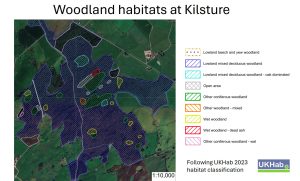Scotland's Landscape Charter
Kilsture Forest
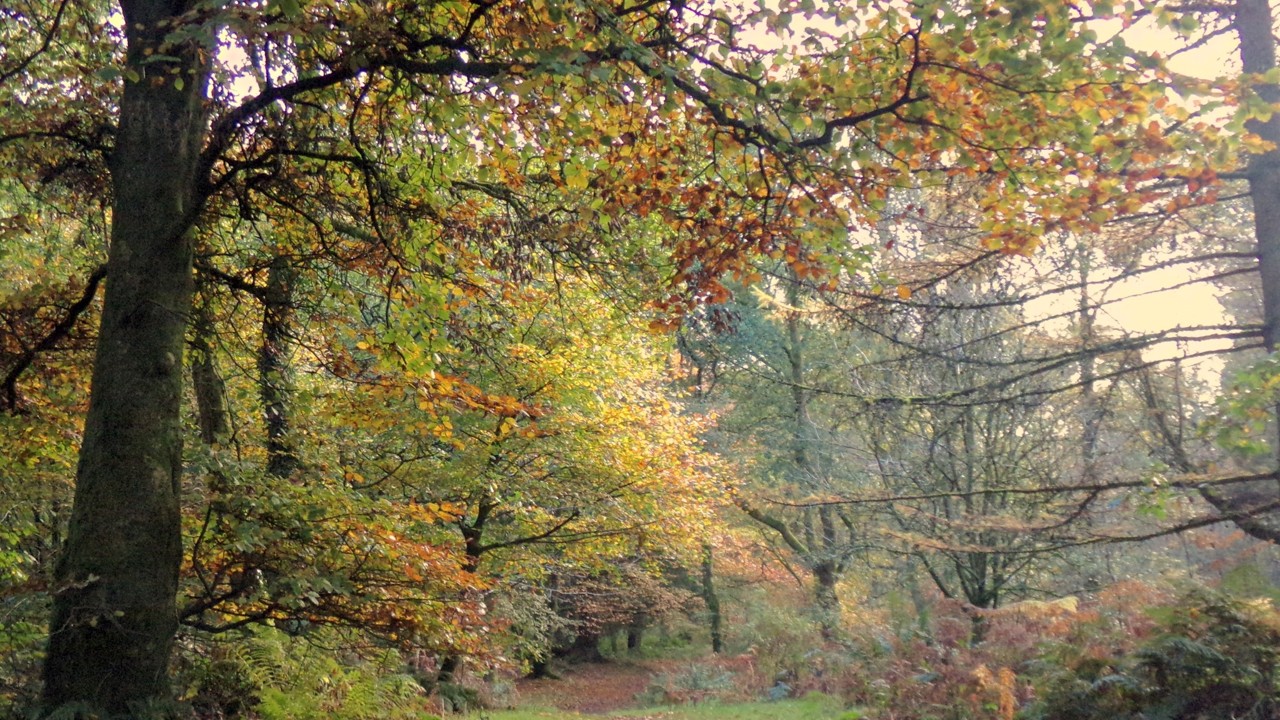
Landscape Statement – Vision
Kilsture Forest is a 204-hectare, 80-100 year-old mixed-woodland plantation which lies at the heart of The Machars in Galloway, much loved by local people. Its uniqueness and richness lie in the diversity of woodland habitat types that make up the forest, each supporting different wildlife communities.
Kilsture Forest Community Group was formed to lead a campaign to save Kilsture Forest from being sold into private hands in 2018. The forest had been put on the disposal list by Forestry and Land Scotland, who manage the estate, having scored poorly when it came up for review. KFCG looked into the criteria used to assess the forest and made the case that the emphasis on footfall and visitor numbers unfairly disadvantaged rural forests serving smaller populations, resulting in the forest being taken off the disposal list. The strength of local engagement led FLS to invite us to collaborate in managing the forest through their Community Agreements framework.
We began with a volunteer path-maintenance agreement and, in 2024, signed a Memorandum of Understanding giving KFCG a formal—though not legally binding—role in representing community interests within the 2023–2033 Land Management Plan. Our priorities focus on low-impact management that enhances biodiversity and supports habitat restoration.
Our ethos is simple: it’s not what the forest can do for us, but what we can do for the forest. By nurturing the conditions that allow the woodland and its wildlife to thrive, we aim to build a climate-resilient, nature-led future where people and place flourish together.

How does this project deliver the principles of the charter?
1. Collaboration
Everything KFCG does is built on collaboration, combining volunteers with diverse levels of knowledge and experience together with specialist practitioners, in a collective effort that builds local confidence and capacity, echoing the SLA Charter’s call for joined-up action.
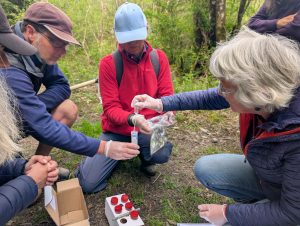
We started our citizen science projects in 2023. With support from South West Scotland Environmental Information Centre (SWSEIC), local and national species specialists and volunteer recorders are building a biodiversity baseline for Kilsture. Since we started, around 600 new species have been added to historic records held by SWSEIC who are now uploading all these data onto a unique publicly accessible digital map of the forest ecosystem.
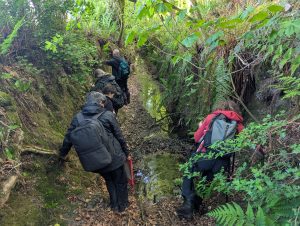
Every aspect of the forest is important to KFCG, from the forest canopy to below the forest floor and all that lives and moves in between. To this end we have commissioned a multi spectral drone survey and presented a Mycorrhizae Symposium; we are carrying out an ongoing Woodland Condition Assessment, designed by woodland ecologists for volunteers to monitor the diverse woodland habitats over time; we are surveying wetlands and watercourses guided by Galloway Fisheries Trust.
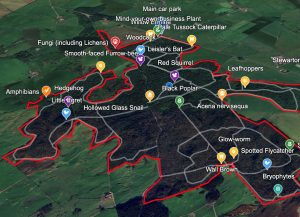
Through these projects we are creating a shareable resource of data and experience that informs our interaction with FLS, volunteers and the wider landscape of information exchange: Kilsture is situated within the Galloway and South Ayrshire Biosphere and KFCG is part of the D&G Woodland network and members of the Community Woodland Association. Our connectivity is further supported by our funding partners, Future Woodlands, Inspiring Scotland and Scottish Forestry keeping us on the national radar.
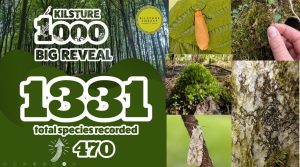
2. Dynamism
Kilsture Forest is not static but an evolving landscape, shaped by climate pressures that require adaptability. Tree disease such as ash die-back is prevalent, more frequent, destructive storms uproot mature trees. Our work embraces this dynamism. We’re not trying to preserve the forest in time, but to understand its natural processes and help it evolve towards greater resilience and richness.
Through our ongoing baseline biodiversity surveys, we’re building a picture of what we have now, so we can monitor change and identify what strengthens the forest’s ability to cope and flourish. We know that biodiversity gain feeds climate resilience, and that habitat diversity – from wet woodland to closed canopy woodland and open glades – offer the best defence for the forest in an uncertain future.
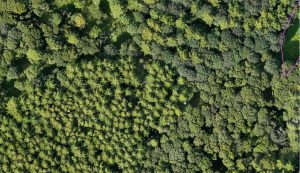
Our management approach reflects this learning. Volunteers have moved from recording species lists to studying the interactions that drive forest health. We’re open to letting nature lead – accepting that storms, disease, and natural succession can deliver many of the Land Management Plan’s aims without unnecessary physical intervention.
The partnership with Forestry and Land Scotland gives us the freedom to focus on ecological improvement and enhancement as opposed to the practical liabilities and financial burden that direct land ownership brings. Managing challenges like ash dieback adjacent to paths or public roads and control of deer numbers remain with FLS. For KFCG dynamic means staying curious, flexible, and grounded in evidence – letting the forest teach us how to adapt.
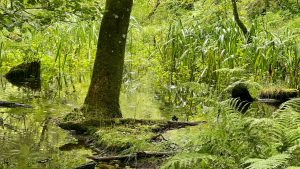
3. Diversity
Diversity is the heart of Kilsture’s resilience, whether that’s ecological or human.
The forest supports a mosaic of habitats each providing its own contribution to the forest ecosystem. This was revealed by our Woodland Condition Assessment indicating the differing plant communities which coexist here, connected through soils rich with mycorrhizae. Keeping this diverse range of trees in the ground and carbon locked in the soil is central to our management principles.
More frequent storms are reshaping the woodland, opening up new spaces for light-loving species while reducing the dominance of localised coups of less-firm commercial conifers. In many ways, nature is already delivering the goals of the Land Management Plan, reminding us that natural disturbance can also be regenerative intervention. Future work on wetland restoration and low-impact management will further enhance habitat health and diversity.

We are acutely aware of the importance building age and demographic diversity into our work now, to ensure the future of community custodianship of Kilsture. Our Forest School programme which we deliver during the school day to all the six local primary schools, ensures that every child of primary age and their families, will connect with Kilsture. We plan to extend this work to create a programme for junior rangers for young people in secondary school.
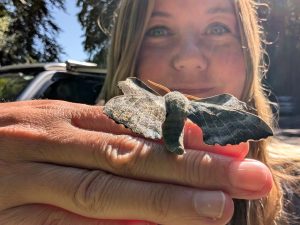
Our Arts | Science | Forest programme introduces an interdisciplinary way of working that brings diversity of knowledge and thought to our community, by bringing artist and scientist and a forester together in the forest to share their different insights and observations. They are Kilsture’s ‘future watchers’ contributing their different perspectives to deepen our understanding of the forest ecosystem to build climate resilience and support biodiversity.
What's Next
Kilsture Forest is already a local landscape cherished by both the local community and visitors alike in its current form.
The group though, is committed to maintaining, sustaining and enhancing the positive benefits that the forest provides through its contribution to the area’s biodiversity and climate resilience coupled with its social benefits for recreation and health and well being.
Our long term aim is to work with the dynamic nature of the forest environment so that it continues to benefit future generations through considered management of the forest. We hope to achieve this through ongoing, inquisitive exploration, citizen science collaboration using volunteers and experts and concensus discussion and agreement with the forest’s owners, Forestry & Land Scotland.

Our vision is that sympathetic but robust local stewardship responsibility for Kilsture will be handed down the generations through ongoing collaboration ensuring that the ever-changing forest ecosystem will continue to benefit the community over years, decades and centuries. This is a locally important legacy that we are benefiting from today and which we wish to hand-on to our future community in an enhanced and resilient form.


Image Credits:
Kilsture Forest Community Group
Location
The Machars, Dumfries & Galloway
Year Completed
Ongoing
Lead Contact
Julia Farrington, KFCG Co-Chair : juliafarrington@hotmail.com
Groups and Organisations Involved
Kilsture Forest Community Group (KFCG)
Forestry & Land Scotland (FLS)

